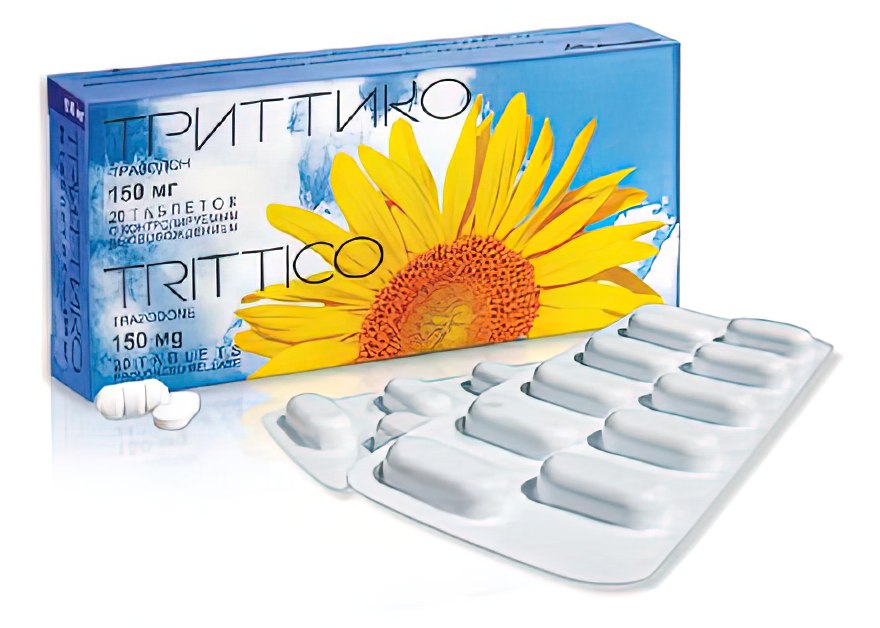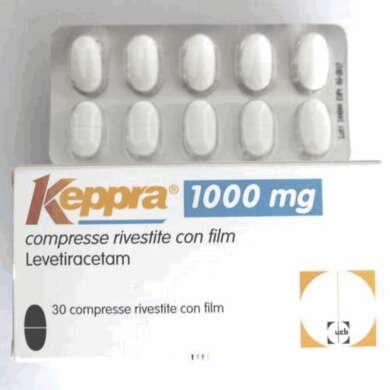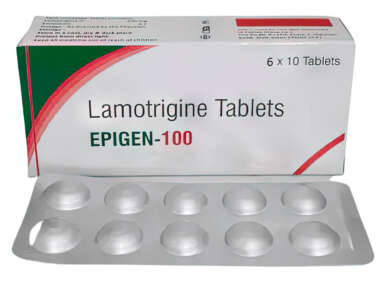Description
Buy Trittico Trazodone 150mg tablets #20
Description of Trittico:
Trittico is effective for the treatment of depressive conditions, including depression associated with anxiety and sleep disorders, and has a rapid onset of action (about 1 week).
Trazodone is a serotonin reuptake inhibitor and 5-HT2 receptor antagonist, the activation of which is usually associated with insomnia, anxiety, psychomotor agitation and changes in sexual function.
Unlike other psychotropic drugs, trazodone is not contraindicated in glaucoma and urinary disorders, it does not have extrapyramidal effects and does not potentiate adrenergic transmission.
Ingredients:
Active substance: trazodone hydrochloride 150 mg;;
Excipients: sucrose, carnauba wax, povidone, magnesium stearate.
Pharmacodynamics of Trittico 150 mg tablets # 20:
Trazodone is a triazolepyridine derivative. It is effective for the treatment of depressive conditions, including depression associated with anxiety and sleep disorders, and has a rapid onset of action (about 1 week).
Trazodone is a serotonin reuptake inhibitor and an antagonist of 5-HT2 receptors, the activation of which is usually associated with insomnia, anxiety, psychomotor agitation and changes in sexual function.
Unlike other psychotropic drugs, trazodone is not contraindicated in glaucoma and urinary disorders, it does not have extrapyramidal effects and does not potentiate adrenergic transmission. Trazodone lacks anticholinergic activity and therefore does not exhibit the typical effects of tricyclic antidepressants on cardiac function.
Pharmacokinetics of Trittico 150 mg tablets # 20:
After a single oral dose of trazodone extended release at a dose of 75 mg, its Cmax in plasma is about 0.7 μg/ml and is achieved within a Tmax of 4 hours; AUC is approximately 8 mcg/ml/h. After a single oral dose of trazodone extended release at a dose of 150 mg, Cmax is approximately 1.2 mcg/ml and is achieved in Tmax of 4 hours. T½ is approximately 12 hours, and AUC is approximately 18 mcg/ml/hour.
In vitro studies on human liver microsomes revealed that trazodone is metabolized primarily by cytochrome P450 3A4 (CYP 3A4).
Trazodone is excreted primarily in the urine in the form of metabolites.
Indications for use of Trittico 150 mg tablets # 20:
Depressive disorders with or without anxiety.
Contraindications of Trittico 150 mg tablets # 20:
Known hypersensitivity to the drug or its components. Alcohol intoxication and intoxication with sleeping pills. Acute myocardial infarction.
Interactions:
Are common
The sedative effects of antipsychotics, hypnotics, anxiolytics and antihistamines may be enhanced. It is recommended to reduce the dose of these drugs.
Oral contraceptives, phenytoin, carbamazepine and barbiturates, due to their effects on the liver, accelerate the metabolism of antidepressants. Cimetidine and other antipsychotics slow down the metabolism of antidepressants.
CYP3A4 inhibitors
Data from in vitro drug metabolism studies indicate the potential for drug interactions when trazodone is used concomitantly with inhibitors of cytochrome CYP3A4, such as erythromycin, ketoconazole, itraconazole, ritonavir, indinavir and nefazodone. The use of CYP3A4 inhibitors may lead to a significant increase in trazodone plasma concentrations. In vivo studies in healthy volunteers confirmed that following administration of ritonavir 200 mg twice daily, trazodone plasma levels increased more than 2-fold, resulting in nausea, syncope and hypotension. Therefore, when using trazodone concomitantly with a strong CYP3A4 inhibitor, it would be advisable to reduce the dose of trazodone.
However, if possible, concomitant use of trazodone and strong CYP3A4 inhibitors should be avoided altogether.
Carbamazepine
When trazodone is used concomitantly with carbamazepine, plasma concentrations of trazodone decrease. When used simultaneously with carbamazepine at a dose of 400 mg/day, plasma concentrations of trazodone and its active metabolite m-chlorophenylpiperazine decreased by 76% and 60%, respectively. The patient’s condition should be carefully monitored regarding the need to increase the dose of trazodone.
Tricyclic antidepressants
There is a risk of drug interaction, so concomitant use with trazodone should be avoided. With simultaneous use, the development of serotonin syndrome and adverse reactions from the cardiovascular system should be expected.
Fluoxetine
Rare cases of increased trazodone plasma levels and adverse effects have been reported during concomitant use of trazodone with fluoxetine (a CYP1A2/2D6 inhibitor). The mechanism underlying this pharmacokinetic interaction is not fully understood. A pharmacodynamic interaction (serotonin syndrome) cannot be excluded.
Monoamine oxidase inhibitors (MAO)
Isolated cases of interaction between trazodone and MAO inhibitors have been reported. Although some doctors practice the simultaneous use of these drugs, it is not recommended to use trazodone simultaneously with MAO inhibitors or within 2 weeks after their discontinuation. It is also not recommended to begin therapy with MAO inhibitors within 1 week after discontinuation of trazodone.
Phenothiazines
When used concomitantly with phenothiazines, such as chlorpromazine, fluphenazine, levomepromazine, perphenazine, cases of severe orthostatic arterial hypotension have been observed.
Anesthetics/muscle relaxants
Trazodone hydrochloride may enhance the effects of muscle relaxants and volatile anesthetics. Such combinations should be used with caution.
Alcohol
The sedative effects of alcohol under the influence of trazodone become more pronounced. During trazodone therapy, the patient should avoid drinking alcohol.
Levodopa
Antidepressants may speed up the metabolism of levodopa.
Other means
When trazodone is used concomitantly with drugs known to prolong the QT interval, the risk of ventricular arrhythmias, including torsade de pointes, may increase. Use these agents concomitantly with trazodone with caution.
Trazodone is only a very weak norepinephrine reuptake inhibitor and does not affect the blood pressure response to tyramine therapy, so an effect of trazodone on the hypotensive effects of guanethidine compounds should not be expected. However, studies in laboratory animals have shown that trazodone can inhibit most of the acute effects of clonidine.
Although drug interactions have not been reported when other types of antihypertensive drugs are used concomitantly with trazodone, the possibility of potentiation of effects should be considered.
The incidence of adverse effects may increase when trazodone is used concomitantly with preparations containing common St. John’s wort (Hypericum perforatum).
Oral anticoagulants and/or antiplatelet agents: Rarely, effects on the anticoagulant effect (abnormal laboratory values and/or clinical signs and symptoms) with increased bleeding have been reported.
Cases of changes in prothrombin time values have been reported in patients who used trazodone and warfarin concomitantly.
Serum levels of digoxin or phenytoin may be increased when these drugs are used concomitantly with trazodone. Serum levels of the above-mentioned agents should be monitored in patients receiving such therapy.
Application Features
Use for children and adolescents
Trazodone should not be used in children and adolescents. In a clinical trial in children and adolescents, suicidal behavior (suicide attempt and suicide planning) and hostility (mainly aggression, protest behavior and anger) were observed more frequently in the antidepressant group than in the placebo group. In addition, there is currently no data on the long-term safety of the drug in children and adolescents, given its effects on growth, puberty and cognitive and behavioral development.
Suicide/suicidal ideation or clinical worsening
Depression is associated with an increased risk of suicidal ideation, self-harm, and suicide (suicidal behavior). This risk persists until significant remission occurs. Improvement may occur during the first few weeks of therapy or longer. Patients should be closely monitored until such improvement occurs. General clinical experience suggests a possible increased risk of suicide in the early stages of recovery.
It is known that patients with a history of suicidal behavior or patients who had a significant degree of suicidal ideation before starting therapy have a higher risk of developing suicidal thoughts or suicide attempts, so they should be closely monitored during treatment. A meta-analysis of placebo-controlled clinical trials of antidepressants for mental disorders showed that among patients under 25 years of age, those in the antidepressant group had a higher risk of suicidal behavior than those in the placebo group.
Therapy with this drug should be accompanied by careful monitoring of patients, in particular those at high risk, especially at the beginning of treatment and after changes in the dose of the drug. Patients (and their caregivers) should be warned to monitor for any clinical signs of worsening, suicidal behavior or thoughts, and unusual changes in behavior and, if observed, to seek immediate medical advice.
To minimize the potential risk of suicide attempts, especially early in therapy, the physician should prescribe only a limited amount of trazodone to the patient at each visit.
It is recommended to carefully select the dosage regimen and carry out regular monitoring of patients with the following conditions:
epilepsy, in particular, such patients should not sharply increase or decrease the dose;
impaired liver or kidney function, especially severe;
heart diseases such as angina pectoris, cardiac conduction disorders or atrioventricular block of varying degrees; recent myocardial infarction;
hyperthyroidism;
difficulty urinating, for example, with prostatic hypertrophy, although such problems are not expected, since the anticholinergic effect of trazodone is insignificant;
acute angle-closure glaucoma, increased intraocular pressure, although significant changes in the condition are not expected, since the anticholinergic effect of trazodone is insignificant.
If the patient develops jaundice, trazodone therapy should be discontinued.
When antidepressants are used in patients with schizophrenia or other psychotic disorders, psychotic symptoms may increase. Paranoid thoughts may become more pronounced. During trazodone therapy, the depressive phase of manic-depressive psychosis may change to a manic phase. In this case, the use of trazodone should be discontinued.
During concomitant use with other serotonergic drugs, such as other antidepressants (for example, tricyclic antidepressants, selective serotonin reuptake inhibitors, serotonin-norepinephrine reuptake inhibitors, and MAO inhibitors) and antipsychotics, drug interactions with the development of serotonin syndrome/neuroleptic malignant syndrome have been reported. . Cases of neuroleptic malignant syndrome with a fatal outcome have been reported with simultaneous use of the drug with antipsychotics, for which this syndrome is known to have a possible adverse reaction. For more detailed information, see the sections “Interaction with other medicinal products and other types of interactions” and “Adverse reactions”.
Because agranulocytosis can clinically manifest as a flu-like illness, sore throat, and fever, laboratory blood tests should be checked when these symptoms occur.
Hypotension, including orthostatic hypotension and syncope, has been reported in patients treated with trazodone. If antihypertensive agents are used concomitantly with trazodone, a reduction in the dose of the antihypertensive drug may be necessary.
Use with caution in patients taking serotonergic drugs, such as trazodone, concomitantly with anticoagulants and/or antiplatelet drugs, as well as in patients with a predisposition to bleeding.
Elderly patients are often more susceptible to the adverse effects of antidepressants, especially orthostatic hypotension, somnolence, and other anticholinergic effects.
Attention should be paid to possible additive effects when used concomitantly with other medicinal products, such as other psychotropic or antihypertensive drugs, or the presence of risk factors, such as concomitant disease, which may enhance such reactions.
It is recommended to provide information to the patient/supervisor about the possibility of such reactions and to monitor more closely for the occurrence of such effects after initiation of therapy, before and after dosage increases.
At the end of a course of trazodone therapy, especially if the course has been long, it is recommended to gradually reduce the dose until the drug is completely discontinued in order to minimize the likelihood of withdrawal symptoms, including nausea, headaches and general malaise.
There is nothing to indicate that trazodone hydrochloride is addictive.
Very rare cases of QT prolongation have been reported with the use of trazodone, an effect that is also characteristic of other antidepressants. Trazodone should be used with caution concomitantly with drugs known to prolong the QT interval. Trazodone should be used with caution in patients with diagnosed cardiovascular diseases, including those accompanied by prolongation of the QT interval.
Serum levels of trazodone may increase with the use of potent inhibitors of cytochrome CYP3A4. For more information, see the section “Interaction with other medicinal products and other types of interactions”
Like other drugs with alpha-blocking activity, trazodone causes priapism in very rare cases. If this occurs, an intracavernosal injection of an alpha-adrenergic agent such as epinephrine or metaraminol should be used. However, cases of trazodone-induced priapism have been reported where surgical intervention was required or where permanent sexual dysfunction resulted. In patients with suspected adverse reactions, trazodone should be discontinued immediately.
Trittico, extended-release tablets, contains sucrose. This drug should not be used in patients with rare hereditary diseases such as fructose intolerance, glucose-galactose malabsorption syndrome, or sucrase-isomaltose deficiency.
If you have a known intolerance to certain sugars, consult your doctor before taking this medicine.
Impact on urine analysis
When an immunoassay test is used to detect drugs in urine, the reactivity of the trazodone metabolite m-chlorophenylpiperazine (m-CPP), which is structurally similar to methylenedioxymethamphetamine (MDMA, ecstasy), may cause a pseudo-positive result for amphetamine. In this case, analysis to confirm the presence by mass spectrometry (MS) is recommended.
Use during pregnancy or breastfeeding
Pregnancy
Data from a limited number (<200) of pregnant women exposed to trazodone indicate no adverse effects on pregnancy or fetal/newborn health. There are no other relevant epidemiological data yet. Data from animal studies do not indicate any direct or indirect harmful effects of this substance, used in therapeutic doses, on pregnancy, embryonic/fetal development, childbirth or postnatal development of the offspring.
Pregnant women should use the drug with caution. If trazodone is used by a pregnant woman, the infant should be monitored after delivery for possible withdrawal syndrome, taking into account the maternal benefit/fetal risk ratio.
Lactation
Limited data indicate that trazodone passes into breast milk in small amounts, but the active metabolite content is unknown. Due to insufficient data, the decision to continue/discontinue breastfeeding or continue/discontinue trazodone therapy should be made taking into account the benefits of breastfeeding for the child and the benefits of trazodone therapy for the mother.
Overdose of Trittico 150 mg tablets # 20:
More often with an overdose, drowsiness, dizziness, nausea and vomiting are observed. In complex cases, coma, tachycardia, arterial hypotension, hyponatremia, convulsions and respiratory failure occurred.
Cardiac symptoms may include bradycardia, QT interval prolongation, and torsade de pointes.
Symptoms may appear within 24 hours of an overdose or later.
Concomitant overdose of trazodone and other antidepressants can cause serotonin syndrome.
Treatment of overdose
There is no specific antidote. Adults who have taken more than 1 g of trazodone or children who have taken more than 150 mg of trazodone should be given activated charcoal within 1 hour of detection of an overdose. In other cases, in adults, gastric lavage may be advisable within 1 hour of taking potentially life-threatening doses.
It is necessary to monitor the patient’s condition for at least 6 hours after taking the drug (or 12 hours when taking a slow-release drug). Blood pressure, pulse and Glasgow Coma Scale (GCS) should be monitored. If the GCS score decreases, blood oxygen saturation should be monitored.
In symptomatic patients, cardiac monitoring is necessary.
If isolated short-term seizures occur, treatment is not required. For frequent or prolonged convulsions, prescribe intravenous diazepam (0.1-0.3 mg/kg body weight) or lorazepam (4 mg for adults and 0.05 mg/kg for children).
If these measures do not control seizures, intravenous phenytoin infusion may be appropriate. If necessary, give the patient oxygen and correct the acid-base balance and metabolic disorders.
For arterial hypotension and excessive sedation, use symptomatic and supportive therapy. If severe hypotension persists, the use of inotropic agents such as dopamine or dobutamine should be considered.
Side effects:
Cases of suicidal ideation and suicidal behavior have been reported during trazodone therapy or shortly after its cessation. And also, clinical problems in all body systems.
Storage:
Store below 25°C in original packaging. Keep out of the reach of children.
Shelf life:
3 years.





Reviews
There are no reviews yet.